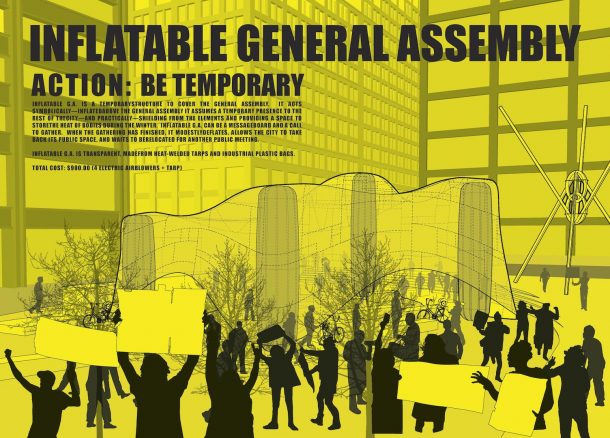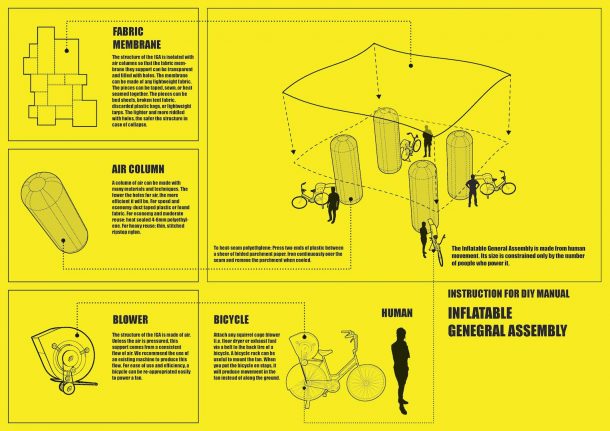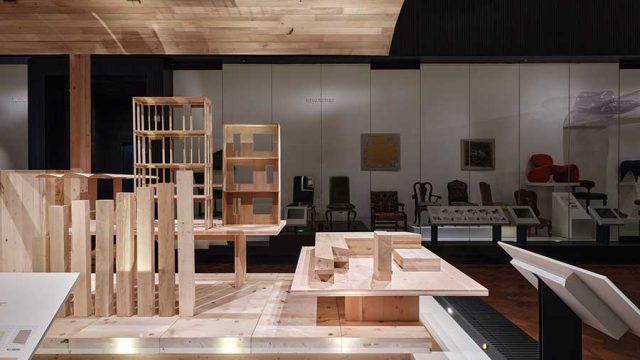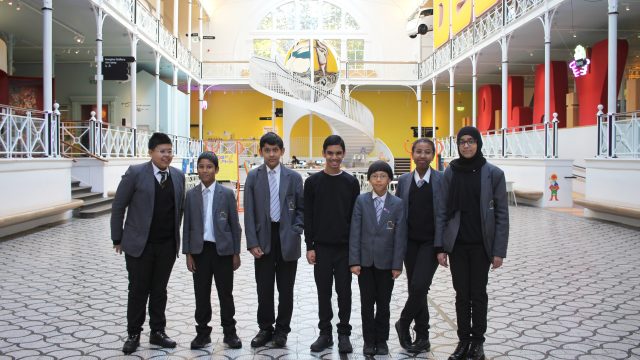Like many of the people occupying Zuccotti Park in 2011, the collective Common Practice contributed to their protest camp by drawing on the skills and training they knew best – architecture & design. The result was the 123Occupy project, whose model of an Inflatable General Assembly can be seen in ‘Disobedient Objects’.
In this post we interview Common Practice member Greta Hansen about the collective, its origins with 123 Occupy, and designing for the 99% now. The end of this interview includes a DIY guide for making your own Inflatable General Assembly.
![123 Occupy [Now Common Practice], Model for General Assembly, New York, 2011. Photography by the Victoria & Albert Museum, London, UK. © Victoria & Albert Museum](https://www.vam.ac.uk/blog/wp-content/uploads/2014/09/c-Victoria-and-Albert-Museum-London_smaller-610x407.jpg)
1. Who/What is 123Occupy? Why did you form, or what do you do now ?
123Occupy is project that has two sides. On one hand it is a very specific project responding to the weather conditions at Zuccotti Park in 2011 when hundreds of protesters were camping outside and winter was approaching. On the other hand it was a sharing strategy. In a group that is now loosely known as Common Practice, we were a handful of architects who came together to approach the winter problem, and the fast distribution of ideas was critical. We wanted to reach more protesters in a short period of time in order to produce more warm spaces than we could have made on our own. We thought our designs could be quickly passed to other hands, produced, manipulated, transformed, and replicated through a set of instructions.
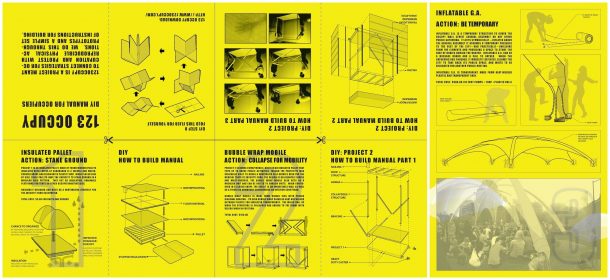
We began to understand our own practice of architecture as basically the production of instructions. We were seeing architecture not as the built product but as the coding of information that would inform it. The code or set of instructions—which became a series of brochures and posters primarily designed by Kyung Jae Kim—could be almost infinitely small. We pared the code to an 11×17 fold-up brochure with eight instructional grids on a side as an easy way to share ideas through the non-hierarchical circumstance of the park. But in theory the code could be as heavy as a full-sized set of construction documents or as lightweight as a string of type.
2. Tell me more about the Inflatable General Assembly. What is it? Why did you create it? What problems (design, public, ect) does it solve? What do you feel is the ideal situation to deploy it?
The bubble is an “other” space separated by the inflated plane from all the other space we normally spend our time in. Originally we imagined that enclosing the general assembly that gathered each night on the steps of Zuccotti Park would be a way of protecting the otherness of the Occupy Wall Street protest. But our project was never realized—we knew it would probably never be built—so the design was in solidarity with the otherness of that protest.
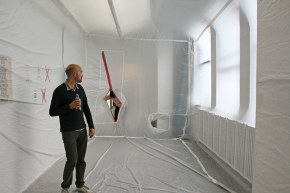
At one point last fall we used the Inflatable General Assembly as a bottleneck instead of a gathering space. There was a lecture at Columbia University School of Architecture’s offsite space called Studio X. The subject matter was the relationship between Occupy Wall Street (New York) and Occupy Gezi (Istanbul). Originally we had planned to do a reverse shrink wrap of the entire lecture space in order to create a sort of zone-apart-from-reality: once you stepped through the plastic envelope you would be there. Instead we an entire bubble as the transition. We installed a 40’-0” bottle in the corridor leading to the hall, forcing participants to enter the inflated space in order to access the event.

If there is any ideal space to insert a bubble, however, it is anywhere with a lot of children. They seem to intuitively recognize the magic of an inflated zone of otherness. It is immediately a place for acting, playing, and pretending in a different way and we see this every time we blow up in a public park. The childlike attitude is probably the reaction we are hoping to induce in ourselves and other grown-ups.
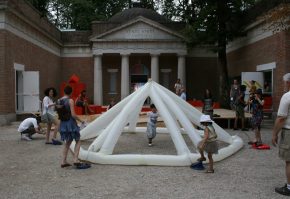
3. Are there any other projects your working on, or anything else we should know about?
Common Practice started designing for the common goals of people (i.e. in the spirit of the 99%) but was also conceived as a basket of common design practices and a way for us as architects to branch into multiple design fields that are normally seen as distinct from one another. We have experimented with furniture and are currently hatching ideas and experiments in materials testing and an interview series. And we are passing from bubbles to other design objects but have created a human-powered fan to inflate them (we call it the bicycle blower) in case we ever get the urge.
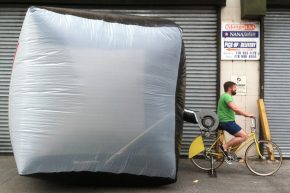
Common Practice’s members include Greta Hansen, Adam Koogler, Kyung-Jae Kim & Andy Rauchut. Savable images of their DIY Manual for creating your own Inflatable General Assembly can be found below:
